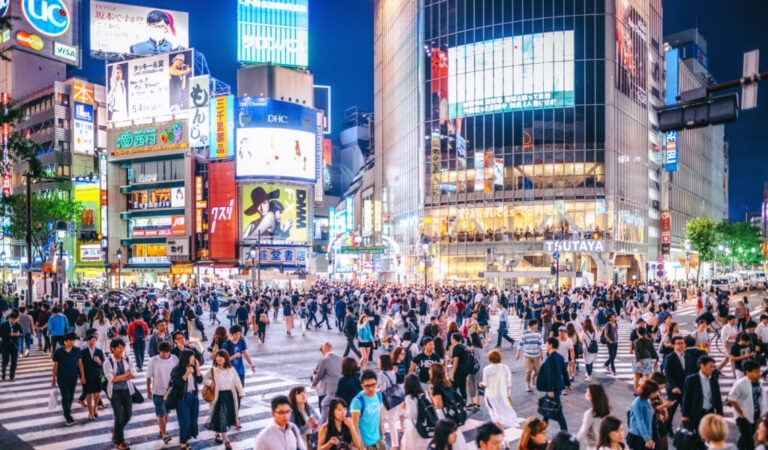As Japan bids farewell to 2023, New Year’s Eve, or Omisoka, marks one of the country’s most cherished times for reflection, family gatherings, and vibrant celebrations. This night, infused with both tradition and modern festivity, is celebrated in uniquely Japanese ways, blending ancient customs with urban events. Here’s a detailed look at how Japan will celebrate New Year’s Eve 2024.
Traditional Celebrations: Welcoming the New Year
For many Japanese, New Year’s Eve involves age-old customs that set the tone for a hopeful year ahead. One of the most prominent is Joya no Kane, a solemn Buddhist ceremony where temple bells are rung 108 times. This symbolic number represents human desires, which according to Buddhist belief, must be cleansed to begin the new year with purity and a clear mind. Large temples like Tokyo’s Zojoji Temple and Kyoto’s Chion-in Temple draw visitors who gather to witness this purifying ritual at midnight.
Another cherished custom is Hatsumode, the first shrine or temple visit of the year. On New Year’s Day or shortly after, families visit local shrines to pray for health, happiness, and prosperity in the year to come. Popular shrines like Meiji Shrine in Tokyo or Fushimi Inari Taisha in Kyoto see hundreds of thousands of visitors in early January. Many people also buy good luck charms, such as omamori amulets or hamaya (demon-destroying arrows), and write their hopes for the new year on ema, small wooden plaques left at the shrine.
Food and Family: Traditional Year-End Meals
On New Year’s Eve, families traditionally gather to enjoy a meal of toshikoshi soba, or “year-crossing noodles.” This simple dish of buckwheat noodles is symbolic of resilience and longevity due to its length and durability. Many families also prepare a special osechi ryori meal—elaborate bento boxes with foods like black beans (symbolizing good health) and sweetened chestnuts (for wealth)—to enjoy on New Year’s Day. The days before New Year’s are filled with cleaning and preparation, known as osoji, where homes and workplaces are thoroughly cleaned to enter the new year with a fresh start.
Vibrant Urban Events: Fireworks, Parties, and Nightlife
For those seeking urban excitement, Japan’s major cities offer a variety of New Year’s Eve events, from street celebrations to upscale countdown parties. Shibuya Crossing in Tokyo, famous for its bustling crowds, transforms into a massive New Year’s Eve countdown party, attracting locals and international visitors alike. The streets are packed with revelers, and a light show at midnight welcomes the new year in a festive atmosphere similar to Times Square in New York City.
Tokyo’s luxury hotels and clubs host exclusive countdown events as well. At the Park Hyatt Tokyo, guests can enjoy live music, cocktails, and gourmet food while watching the city’s skyline. Other high-end venues, like The Blue Room at Tokyo Edition, offer exquisite multi-course meals for a more sophisticated celebration.
Entertainment and TV Traditions
In the comfort of their homes, many Japanese tune into the iconic New Year’s Eve TV show, Kohaku Uta Gassen (Red and White Song Battle), where popular music artists compete in a friendly musical showdown. This annual event has been a New Year’s Eve staple for over 70 years and is watched by millions. Families also enjoy comedic specials and other long-running programs like Downtown’s Gaki no Tsukai to close out the year with laughter.
First Sunrise: The Joy of Hatsuhinode
A distinctive New Year’s Day tradition is Hatsuhinode, the practice of watching the first sunrise of the year. Believed to bring good luck, thousands of people gather at scenic spots like Tokyo Bay, Mount Takao, and Mount Fuji to witness the dawn of January 1. Whether atop a mountain or along a coastline, this quiet, reflective moment contrasts with the festivities of the previous night, offering a serene start to the year.
Modern Traditions: Postcards, Shopping, and Lucky Bags
Leading up to the new year, it’s customary for people to send nengajo, or New Year’s postcards, to family, friends, and colleagues. The Japanese postal service even ensures that these cards arrive precisely on January 1. With a focus on goodwill and appreciation, these cards often include traditional New Year’s greetings and the year’s zodiac animal, an emblem of good fortune.
Additionally, Japan has a unique shopping custom called fukubukuro, or “lucky bags,” where stores offer surprise bags filled with goods at a discounted price. Department stores, boutiques, and even popular brands like Uniqlo and Muji participate, turning the first days of January into a shopping frenzy as customers eagerly purchase these “mystery” bags for a lucky start to the year.
Conclusion
New Year’s Eve in Japan remains a rich blend of spiritual rituals, family-centered activities, and vibrant urban celebrations. Whether by participating in solemn traditions like Joya no Kane, enjoying the energy of Tokyo’s nightlife, or reflecting on the first sunrise at Hatsuhinode, Japan’s approach to the New Year is filled with symbolism, community, and celebration. As the country moves into 2024, these traditions continue to evolve, combining the old and new into a uniquely Japanese New Year experience.
